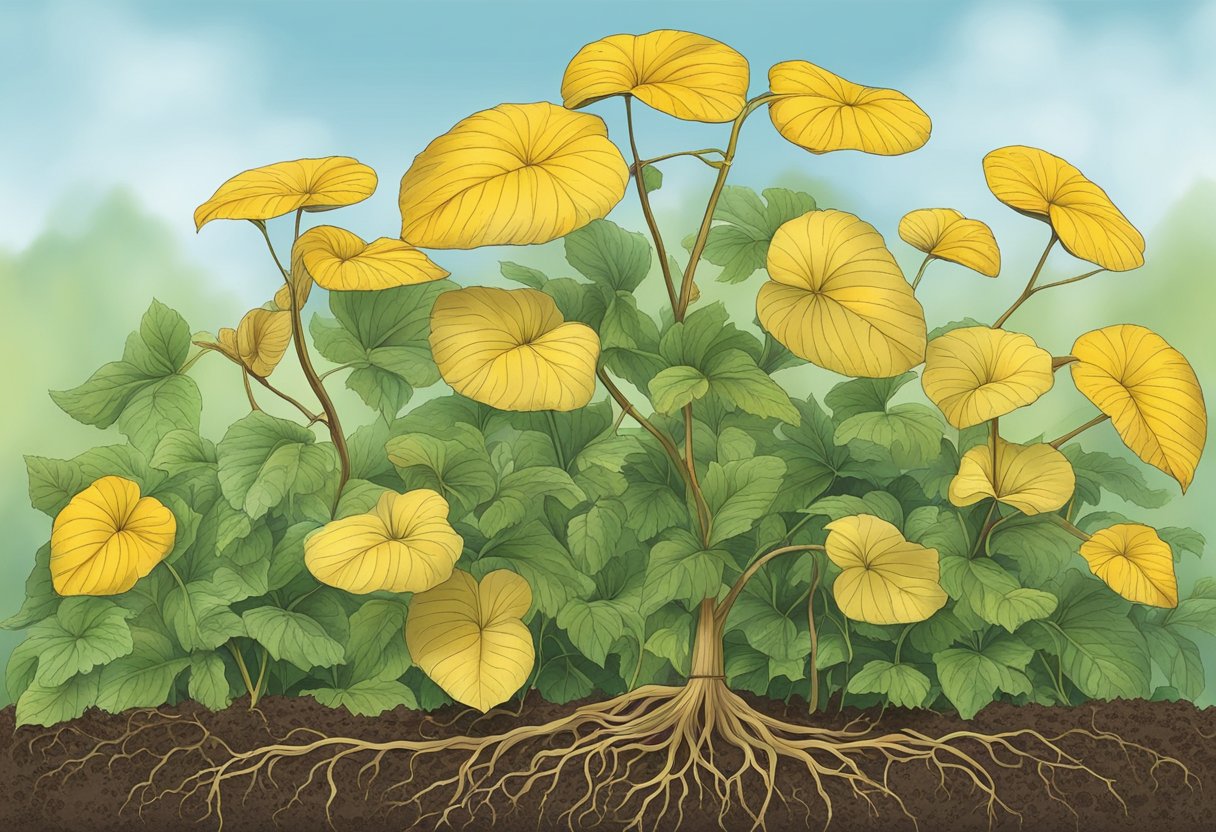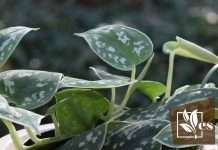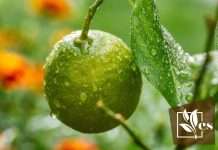As a plant enthusiast, I know the vitality of maintaining healthy plants. Root rot is a common but serious issue that can afflict houseplants, often due to overwatering or poor drainage. Recognizing the signs early is crucial for taking action to save your afflicted green friends. Healthy roots should be firm and a light whitish or cream color, indicative of a plant that can efficiently take up nutrients and water.

I’ve observed that when roots are suffering from rot, they typically turn dark brown or black, become mushy, and may even emit a foul smell—these are the distress signals that should prompt immediate attention. Above the soil, plants may display worrying symptoms as well, such as yellowing leaves, stunted growth, or a general wilt despite adequate watering. It’s critical for plant owners to be vigilant and respond to these symptoms promptly to prevent further damage.
JUMP TO TOPIC
Identifying Root Rot in Plants
Root rot is stealthy but discerning its presence early can save a plant’s life. I’ll guide you through symptoms recognition and diagnosing methods.
Recognizing the Symptoms
- Yellowing leaves: An early indicator that there may be root rot.
- Wilting: The plant appears limp and lifeless despite adequate watering.
- Dark brown roots: A visual confirmation when roots lose their firmness and healthy color.
- Mushy stems: This suggests that the rot is advancing above ground level.
Healthy roots should be white or a light tan color and feel firm to the touch. Foliage should be generally vibrant and robust. When I notice soil remaining soggy for extended periods or a foul odor emanating from the pot, that’s a tell-tale sign that unhealthy soil conditions may have led to fungal growth.
Diagnosing the Disease
💥 Diagnosing root rot involves closely inspecting the plant’s roots and soil.
Fungi are often the culprits behind this disease. To diagnose properly, I gently remove the plant from its pot to inspect the roots directly. Healthy roots again should be firm and a healthy color, not black or squishy. I also inspect the soil for signs of fungal infection, such as mushy spots or a white, cottony growth, which may indicate the presence of root-damaging pathogens.
It’s crucial to act swiftly when you spot these symptoms because the longer the roots are damaged, the less likely the plant is to recover.
I always ensure to examine all parts of the root system, because root rot may not affect the entire root network uniformly. Once diagnosed, prompt and appropriate treatment can increase the chance of the plant’s recovery.
Preventing and Treating Root Rot
Recognizing the signs of root rot and taking swift action are crucial to protecting your plants. With the right strategies, you can prevent this devastating condition and, if necessary, treat affected plants to restore their health.
Cultural Practices for Prevention
Preventing root rot begins with a mindful approach to cultivation. I focus on the following key areas to keep my plants healthy:
Proper Drainage: Ensuring pots have sufficient drainage holes to let excess water escape is essential.
Moisture Control: Over-watering is a common cause of root rot. I stick to a watering schedule that allows soil to dry appropriately between watering sessions.
Soil Quality: I use a well-draining, breathable potting mix that supports healthy root growth.
Cleanliness: Regular cleaning of pots and tools helps prevent the spread of pathogens.
Effective Treatment Options
Treatment should commence as soon as any signs of root rot are observed. Here’s how I address the issue:
Removing Affected Parts: I carefully remove the plant from its pot and trim away any brown, mushy roots with sterilized shears.
Hydrogen Peroxide: To further treat the roots, a solution containing hydrogen peroxide can help eliminate leftover pathogens.
Repotting: Then, I replant in fresh, sterile potting soil and clean pots.
Fungicides: In some cases, using a fungicide designed for root rot can be beneficial.
It’s worth noting that some plants are too far gone to save, but by acting quickly, I maximize the chance of recovery. Be proactive about prevention and ready to treat at the first sign of trouble to help ensure plant health and longevity.
Maintaining Healthy Plants
I know that keeping plants healthy requires attention to their specific needs, particularly when it comes to water and soil. This section shares essential steps gardeners should take to ensure their plants thrive, avoiding common pitfalls like root rot.
Optimizing Watering and Drainage
For healthy plants, it’s critical to get the balance of watering just right—neither too much nor too little.
Overwatering is a common mistake that can lead to wet soil, a prime environment for root rot. I ensure there is good drainage in every pot to prevent excess water from causing harm. Here are my foolproof steps:
- 1. Check drainage holes: Every container must have holes to allow water to escape.
- 2. Use well-draining soil: Mix in perlite, pumice, or organic matter to maintain air pockets.
- 3. Watering schedule: I water my plants only when the top inch of soil is dry to the touch.
- 4. Observation: Keep an eye on the water that comes out of the bottom of the pot to gauge how much water your plants are actually retaining.
Choosing the Right Soil and Containers
Healthy plant growth starts with the right foundation, and that means picking the best soil and containers.
🌱 Soil Choice Matters
For soil, I always use a high-quality potting mix that is appropriate for the type of plant I’m growing. Here’s my approach:
- 1. Soil Texture: It should be loose and crumbly, promoting good root development.
- 2. Amendments: Depending on the plant, I may mix in more perlite, peat, or coir to improve drainage.
When it comes to containers, it is not just about aesthetics but functionality.
🪴 Container Consideration
A container must be the right size—not too large or small for the plant—and should be made of breathable material like terracotta. For nursery pots that may not be as pretty, I often place them within a decorative outer pot, ensuring there’s room for air flow between the two.











